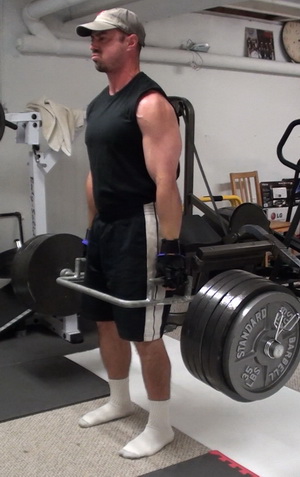Subject: Overtrain on PURPOSE if you want to build serious muscle...
We've always been told that it's bad to overtrain.
This is WRONG.
Overtraining on purpose is where the REAL results are.
First, though, what is overtraining?
Overtraining is, most simply, training too much. Your body is unable to recover from the volume or frequency of training and begins to break down.
You not only lose motivation to train, you become more susceptible to injury and illness, and you may even start to go backwards in your training, getting smaller and weaker on almost a daily basis.
So how can overtraining possibly be good for you? I'll tell you.
It all begins with the incredible adaptive power of your body. As you become more advanced in weight training, you will generally notice that you cannot make consistent gains for a long period of time on one training system.
Your body quickly adapts to whatever training system you're using and hits a plateau. To get around this, it's usually recommended that you change your program every three to six weeks.
The question now is how to use this adaptive ability to your advantage.
It's really quite simple. You gradually build up to a state of temporary overtraining, then, when you're overtrained and your adaptive processes are working to their fullest capacity for recovery, you back off.
This backing off results in what is called overcompensation.
Imagine you're driving a car and climbing a hill with the gas pedal to the floor. You're giving it everything you've got but you're still going up slowly.
This is similar to overtraining.
When you reach the top, the going gets a lot easier.
If you keep the gas pedal on the floor when you go over the top and head down, you're going to go a lot faster very quickly.
This is overcompensation and this is where the results are.
On a normal program, you work a bodypart, it becomes temporarily weaker, then becomes stronger as it overcompensates so you can lift more next time.
What a normal program does on a small, local basis, this overtraining program does on a full body, systemic basis.
Sound good? We're not done.
Now we're going to harness the power of overtraining by using what I call Controlled Overtraining."
This style of training is also known as "Accumulation and Intensification."
The overtraining or ramping phase of this Controlled Overtraining style of program lasts three weeks, which is about the time it takes the body to adapt to a training program. It then backs off to a relatively easy phase for three weeks.
I'll give you an example of this type of program with some numbers so you can see exactly how it works.
- Let's say you start out doing 3 sets for each bodypart the first week.
- You'll then do 4 sets the second week, and 5 sets the third week.
- While you're increasing the volume (number of sets), you're simultaneously decreasing the rest period.
- For example, week 1, you'll use 90 seconds rest.
- Week 2, you'll use 60 seconds rest.
- Week 3 you'll use 45 seconds rest.
This gradually builds you up to overtraining and THAT is where we back off.
For the next three weeks, you then decrease the sets and reps and increase the rest periods.
This allows you to recover from the overtraining and take advantage of the overcompensation that occurs when the body is still working at dealing with the hard work and then you cut the hard work.
Though it may feel like you're hardly doing anything at all, you will see some great results.
For example, you'll reduce the number of sets back down to three per bodypart and increase rest periods to two minutes.
During this phase, you could also decrease your rep ranges so you're using heavier weight and focusing more on strength. You can see some BIG TIME results during this phase!
Continue this lower-volume training for at least three weeks. If, at the end of those three weeks, you are still making progress, keep going! Don't cut yourself off from any results. This phase could last as long as 6 weeks or more.
When you start to slow down, however, it's time to ramp back up to overtraining.
Keeping up this cycling of volume and intensity is a strategy that gives consistent results over long periods of time.
As you can see, overtraining is not always the horrible thing it's often made out to be. Training on the edge is where the real results are. Those who shy away from it will never make as good of progress as those who embrace it!
This type of "Controlled Overtraining" is an integral part of my Two Block Mass program.
During each unique cycle of the program, I take you through 3 weeks of ramping up...accumulation...using a different volume-based training style.
After that, you'll go directly into a lower-volume, higher-intensity style of training paired specifically with the training style you just finished to deliver maximum gains and taking full advantage of the increased "revvs" your body is experiencing in metabolism.
This program delivers BIG results in a "controlled overtraining" framework...and YOU decide which training styles you use during the program.
Discover how you can gain 5-7 lbs of solid muscle in the next 6 weeks.
Nick Nilsson
The Mad Scientist of Muscle
P.S. You are receiving this email because you signed up for emails at Fitstep.com, MadScientistofMuscle.com or you purchased one of my products. If you no longer wish to receive fitness and training info like this, you can instantly unsubscribe by clicking here.

-----------------------------------------------------------------------------------
https://www.fitstep.com/metamorphosis/two-block-mass/two-block-mass.htm
------------------------------------------------------------------

